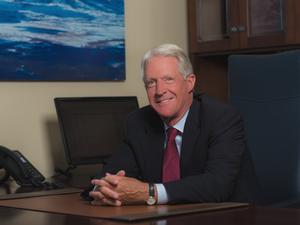
Backed by a recent $30 million raise, a precision oncology company founded by former longtime employees of G1 Therapeutics (Nasdaq: GTHX) is preparing for clinical trials.
The company, Incyclix Bio — formerly known as Arc Therapeutics — plans to initiate a proof-of-concept phase 1 study of its lead compound, INX-315, this year. The company will test the compound, which is a CDK2 inhibitor, in certain types of breast and ovarian cancers.
This Series B round was led by new investor Boxer Capital and included participation from RA Capital Management and Eshelman Ventures of Wilmington. Eshelman led the company's $6 million raise that spurred its launch in 2020.
Company CEO and co-founder Patrick Roberts spoke with Triangle Inno about the founding of the company and this most recent raise. Responses have been edited for length and clarity.
How did the company come together?
Myself, Jay Strum and John Bisi; we were the first three employees at G1 Therapeutics when it was still an incubator company at UNC. We ended up bringing three compounds into the clinic, had an IPO and grew that company to over 100 employees. The company, in 2020, made the decision to really focus on the three clinical programs. We felt like that was a good opportunity for the three of us to kind of step out of G1, form what was (Arc Therapeutics) and now Incyclix, and then we licensed out the CDK2 program that we had been working on there.
Why did you want to begin the process of starting again?
I just really enjoy building a company, having a small team and being flexible. It really allows you to be creative and innovative, where there’s not a lot of bureaucracy that you can find in a large company. I think the other more important thing was the relationship that I have with Jay and John and what we’ve done over the last 10 years. We know each other really well. We know what our strengths and weakness are, and we’ve done this before, so that made it an easy decision to do it again together.
What will this funding support?
The main thing it’ll support is the clinical development; this early dose escalation and expansion clinical trial of INX-315. Obviously, we’re small right now — a team of four — so we’ll be hiring over the next six to nine months probably to get somewhere around 10 to 12 people with a focus on bringing folks in that can help run and coordinate the clinical trial.
How has your background at G1 helped with raising funds?
When we had our launch announcement in 2020, we were contacted by a handful of investors, many of which we had a relationship with from our days at G1. They knew who we were, they liked the target a lot and the success that we had of starting a UNC spinout and taking it all the way to an FDA approval; also kind of gave the team validation.
How is this time around different from the early days of G1?
We were on the road pitching (to investors) a lot in the early days of G1, mostly because we were developing a completely novel therapeutic where we were creating a whole new class. That created a lot of questions from investors around what does the regulatory path look like, what's the endpoint of the study; and to be honest we didn’t have a good answer. Our answer was we’re going to figure it out along the way, but we know that we have something here. This time around, we now have an FDA-approved drug (at G1), we’ve been successful, we’ve moved other molecules into the clinic. And we have a target that is highly sought after and the regulatory path is more straightforward. This is an oncology therapeutic where we are going to try to extend overall survival or progression-free survival. Those are endpoints that investors understand.
How are you leaning on your experience from G1?
There are your set studies that the FDA requires before you initiate clinical development, and then there are additional studies that you would run in parallel as the compound is moving through the clinic. We’ve tended to bring some of those types of studies up to the forefront to really make sure that what we’re taking into the clinical has the best shot of being successful. That’s really important, especially as a small company. It’s better to spend a little more time upfront and make sure that you have a quality compound that you’re moving forward rather than identifying an issue in the clinic and then having to go back and restart.
